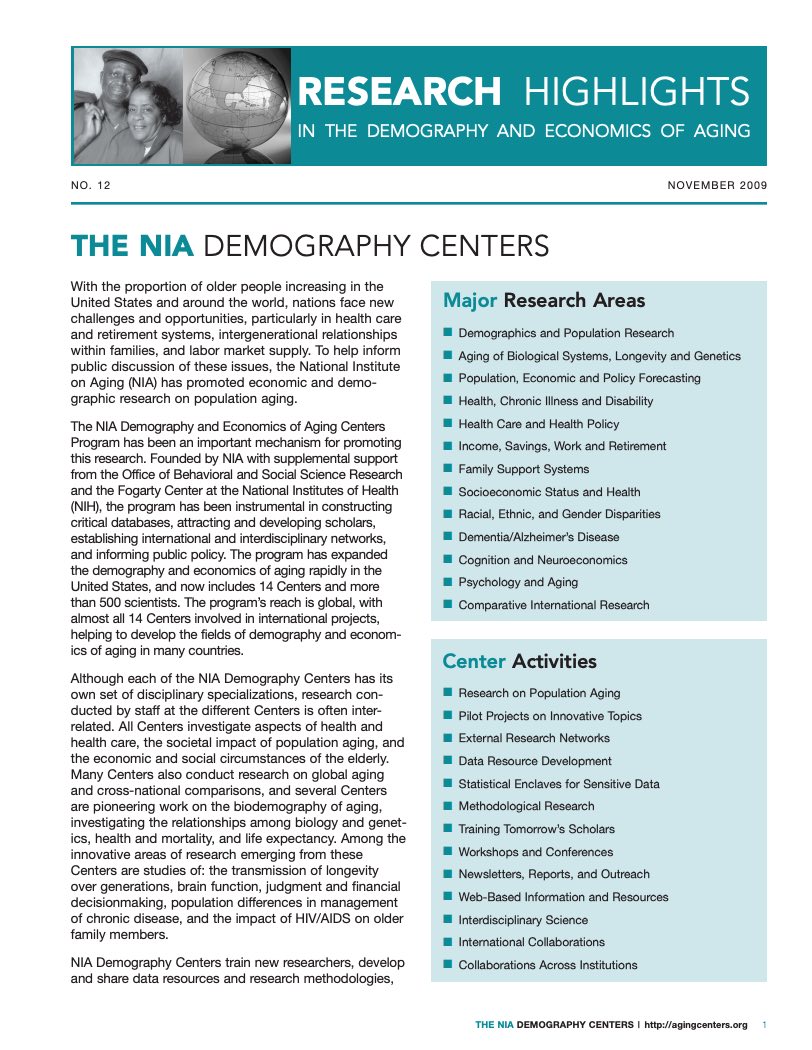
The NIA Demography Centers, 2009
(November 2009) With the proportion of older people increasing in the United States and around the world, nations face new challenges and opportunities, particularly in health care and retirement systems, intergenerational relationships within families, and labor market supply. To help inform public discussion of these issues, the National Institute on Aging (NIA) has promoted economic and demographic research on population aging.
The NIA Demography and Economics of Aging Centers Program has been an important mechanism for promoting this research. Founded by NIA with supplemental support from the Office of Behavioral and Social Science Research and the Fogarty Center at the National Institutes of Health (NIH), the program has been instrumental in constructing critical databases, attracting and developing scholars, establishing international and interdisciplinary networks, and informing public policy. The program has expanded the demography and economics of aging rapidly in the United States, and now includes 14 Centers and more than 500 scientists. The program’s reach is global, with almost all 14 Centers involved in international projects, helping to develop the fields of demography and economics of aging in many countries.
Although each of the NIA Demography Centers has its own set of disciplinary specializations, research conducted by staff at the different Centers is often interrelated. All Centers investigate aspects of health and health care, the societal impact of population aging, and the economic and social circumstances of the elderly. Many Centers also conduct research on global aging and cross-national comparisons, and several Centers are pioneering work on the biodemography of aging, investigating the relationships among biology and genetics, health and mortality, and life expectancy. Among the innovative areas of research emerging from these Centers are studies of: the transmission of longevity over generations, brain function, judgment and financial decisionmaking, population differences in management of chronic disease, and the impact of HIV/AIDS on older family members.
NIA Demography Centers train new researchers, develop and share data resources and research methodologies, and facilitate the formation of collaborative networks. In addition, they provide resources that encourage investigators to engage in aging-related research and that aid in the widespread dissemination of research findings. As a result, these Centers enhance the research community within and beyond their home institutions.

 ">
">